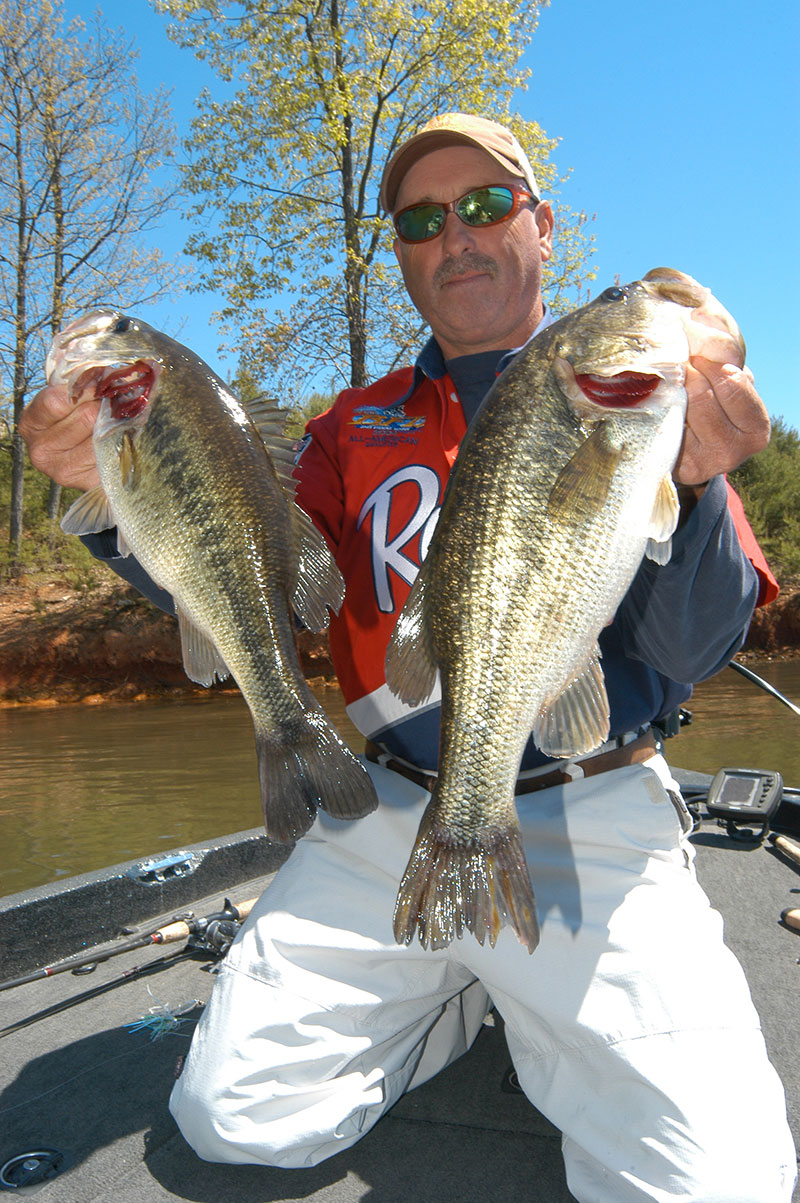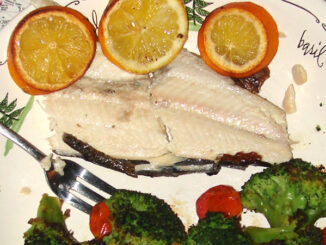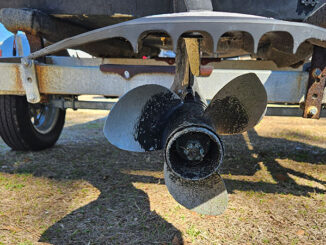
March is a great month to fish across the Carolinas, mostly because the bass are hungry. For the most part, they’ve come out of the cold, winter months, and with the spawn just arond the bend, they’re trying to pack on weight to get them through those tough days on the bed.
But March can actually fish like two different months – winter and spring – and the change may only take a week.
But to the basics, in March, across the Carolinas, fish are starting to stage, depending on how warm or cold the water is. By the end of the month, most fish are absolutely ready to head shallow to spawn. That can happen in some South Carolina lakes, but it usually happens in April in North Carolina lakes. But wherever you’re fishing, know that it’s on their minds.
Everything depends on the weather. Taking for granted that it’s going to be quite a bit warmer later in the month than when the calendar page turns over from February, you’ve got to attack things differently. If it’s cold, like it often is the first of the month, I’m still going to be sitting deep, casting shallow. The fish are going to be in a late-winter pattern, getting on vertical stuff. I know the Carolinas don’t have a lot of vertical banks, rock walls, bluff banks, like they do in all the Tennessee River lakes. But they will be on places where they can move up and move back down quickly.
Secondary points
You want to be sitting in about 20 feet of water, a good, long cast from the bank. A channel swing close to shore will provide that kind of spot, or a long point that extends out to the channel.
As the month progresses and it gets warmer, I’m going to start looking for staging fish. They stage on places outside of the areas they’re going to spawn. They pull up and hang around those places, feeding heavily, until all the conditions line up and they move back in the pockets to spawn. I’m looking for a secondary point, a secondary steep bank, a secondary underwater bluff. It will still be a place where there’s some deep water nearby, but the shallows aren’t far away. Usually, a staging area will be within a hundred yards of the place they’re going to spawn.
You can look for secondary points on the way in, or you can do it backwards. If you know of a place where a lot of fish spawn, you can move back out and find these spots where fish are going to stage. I love to find a little rocky place outside of a spawning pocket, a rocky point or a rock pile. They can be relatively shallow, but still not moved up to where they’re going to spawn. But they’ll be on the last places they go before they move in to spawn.
Gearing up
These are going to be places where you can sit in 10 or 12 feet of water and be a good cast off the bank. As the month progresses, they move from those places where you’re in 20 feet of water casting to the bank to 10 or 12 feet. And rocks play a big role in March. They’ll get around rock really good. That’s because the rocks will absorb sunlight and warm the nearby water a little bit, which draws the bass. And crawfish live around rocks, and the bass are going to know that and be searching them out.
How do I fish these kinds of spots? I’m going to crank them, primarily, and I’m going to have a handful of lures tied on the rods that are on the deck of my Ranger. I think you can do it with just three or four main baits. I’m going to have a Berkley Dredger 14.5 tied on one rod. That’s a bait that’s really good in 10, 11 or 12 feet of water. And very rarely are you going to catch fish more than 10 feet deep in March. Early in March, they’re going to be aggressive and really move up to hit a bait, and the Dredger 14.5 will reach them.
I’m also going to have a Frittside tied on, a 5, 6, 9 or a BigGun7. You may need a Berkley Digger, which is a Killer B-2 type of bait. Sometimes, a Warpig, which is a lipless bait, can come into play. But that’s usually at the beginning of March.
As it warms up, bass will get shallower and they’ll really start biting. The closer they get to the bank, the easier they are to catch.
I’m going to start with crawfish-colored baits, browns and reds. In some lakes, they won’t hit a crawfish color – they tend to be classroom lakes. So I’ll tie on a Kentucky Blue or Honey Shad colored bait if that happens. Some lakes, they’ll key on shad-colored baits in March.
Because I’m fishing in relatively shallow water, I don’t need an extremely long rod. I’ll fish a 6-foot-8 or 7-foot Lew’s cranking rod. I’ll fish a Lew’s BB-1 Pro reel in the slowest retrieve possible. Even with the slower reel, you need to concentrate on not reeling too fast. Be aware, if you’re fishing a faster reel, a 7.5-to-1 or 8.3-to-1 ratio, you can outwind these fish, even if they’re more aggressive. Just slow down.
I spool all my reels with 10-pound Berkley Sensation mono, which is low-stretch line and great to use with a crankbait.
Go slow:
This month, anglers should concentrate on moving their lures very slowly. No matter what retreive ratio your reel is, slow down. Even when bass are being relatively aggressive, it’s possible to reel too fast for their liking.





Be the first to comment